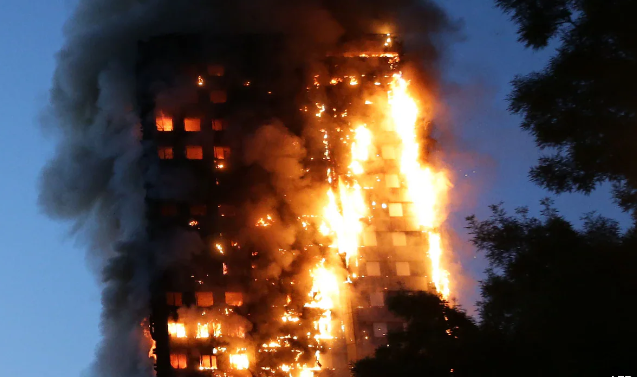The Grenfell Tower fire disaster, which tragically claimed 72 lives, has been described as the result of “decades of failure” by both government and construction industry bodies, along with the “systematic dishonesty” of building material firms, according to a final report released on Wednesday.

The fire, which erupted in the early hours of June 14, 2017, spread rapidly through the 24-storey building in west London due to highly flammable cladding installed on the exterior. Originating from a faulty freezer on the fourth floor, the blaze escalated swiftly, reaching the top floor within half an hour, leading to devastating consequences.
The report, the culmination of a two-part independent inquiry led by retired judge Martin Moore-Bick, is highly critical of the failures that led to the tragedy. Moore-Bick stated that the 72 deaths were “all avoidable” and highlighted that the victims had been “badly failed.”
The inquiry’s findings condemned several entities for their roles in the disaster. It criticized the refurbishment of Grenfell Tower, particularly the installation of dangerous cladding and insulation materials. The report accused firms involved in supplying these materials of “systematic dishonesty,” alleging they engaged in manipulative testing practices and misrepresented data.
Following the report’s release, Prime Minister Keir Starmer committed to ensuring such a tragedy does not recur. “The Government will carefully consider the report and its recommendations to prevent future disasters,” Starmer stated.
The London Fire Brigade (LFB) was also heavily criticized, with senior officers described as “complacent” and failing to address the dangers posed by cladding. The LFB’s inadequate response and failure to learn from a 2009 fire contributed to the disaster, the report found.
Residents were initially advised to “stay-put” in their flats, a directive now deemed to have cost lives. This advice led to some residents, including whole families, becoming trapped and unable to escape. Among the victims were Abdulaziz El-Wahabi, his wife Faouzia, and their three children, as well as a stillborn child and a six-month-old baby found with her mother.
The fire has left many living in similarly clad buildings in constant fear of another disaster. Homeowners face financial challenges as properties with such cladding are unsellable. In response, the UK government has mandated developers to contribute to the removal costs, with those in buildings over 11 meters high not bearing any expense.
Despite these measures, recent incidents, such as a fire in Dagenham, highlight ongoing risks. The London Fire Brigade reports that around 1,300 buildings in London still require urgent remediation.
Bereaved families and survivors hope the report will bring justice, including potential criminal charges for those responsible. However, London’s Metropolitan Police has indicated their investigation will take until the end of 2025, with an additional year for prosecution decisions.
For former Grenfell resident Edward Daffarn, the prolonged timeline is unacceptable. “This report must be the catalyst for significant action from the Met Police in holding accountable those responsible for the deaths of 72 people,” he asserted.



